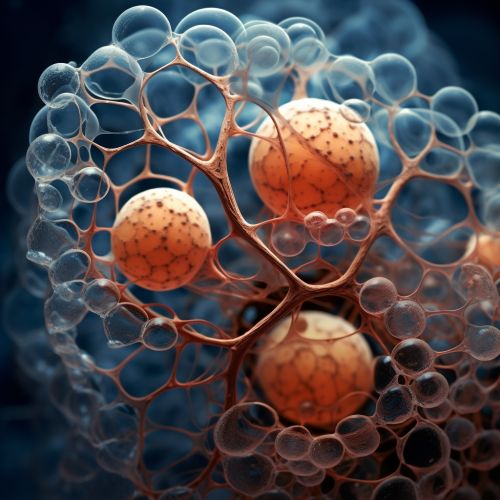Blastocyst
Introduction
The Blastocyst is a structure formed in the early development of mammals. It possesses an inner cell mass (ICM) which later forms the Embryo. The outer layer of the blastocyst consists of cells collectively called the trophoblast. This layer surrounds the inner cell mass and a fluid-filled cavity known as the blastocoel. The trophoblast gives rise to the chorion, an extra-embryonic membrane that participates in the formation of the placenta.


Formation
The blastocyst is formed after the Morula stage in a process called blastulation. The morula, a solid ball of cells, develops a fluid-filled cavity called the blastocoel, transforming it into a blastocyst. This process is facilitated by the sodium-potassium pump, which drives the osmotic flow of water into the intercellular spaces of the morula.
Structure
The blastocyst consists of two primary structures: the inner cell mass (ICM) and the trophoblast. The ICM is a group of cells located on one side of the blastocyst that will eventually develop into the embryo. The trophoblast is a layer of cells that surrounds the ICM and the blastocoel. It will eventually form the chorion and play a crucial role in the formation of the placenta.
Development
The development of the blastocyst is a crucial stage in mammalian embryogenesis. After the formation of the blastocyst, it begins to implant itself into the wall of the uterus, a process known as implantation. This is facilitated by the trophoblast, which begins to differentiate into two layers: the cytotrophoblast and the syncytiotrophoblast. The syncytiotrophoblast is involved in the penetration of the uterine wall, while the cytotrophoblast forms the embryonic part of the placenta.
Implantation
Implantation is a complex process that involves the interaction between the blastocyst and the maternal endometrium, the lining of the uterus. The process begins with the apposition, where the blastocyst loosely attaches to the endometrium. This is followed by adhesion, where the blastocyst firmly attaches to the endometrium. Finally, the blastocyst invades the endometrium in a process called invasion, facilitated by the syncytiotrophoblast.
Clinical Significance
The blastocyst has significant clinical implications, particularly in the field of assisted reproductive technology (ART). In in-vitro fertilization (IVF), embryos are often cultured until the blastocyst stage before being transferred into the uterus. This is because blastocysts have a higher implantation rate compared to earlier stage embryos. Additionally, the blastocyst stage is also crucial for preimplantation genetic diagnosis (PGD), a procedure used to screen embryos for genetic diseases.
